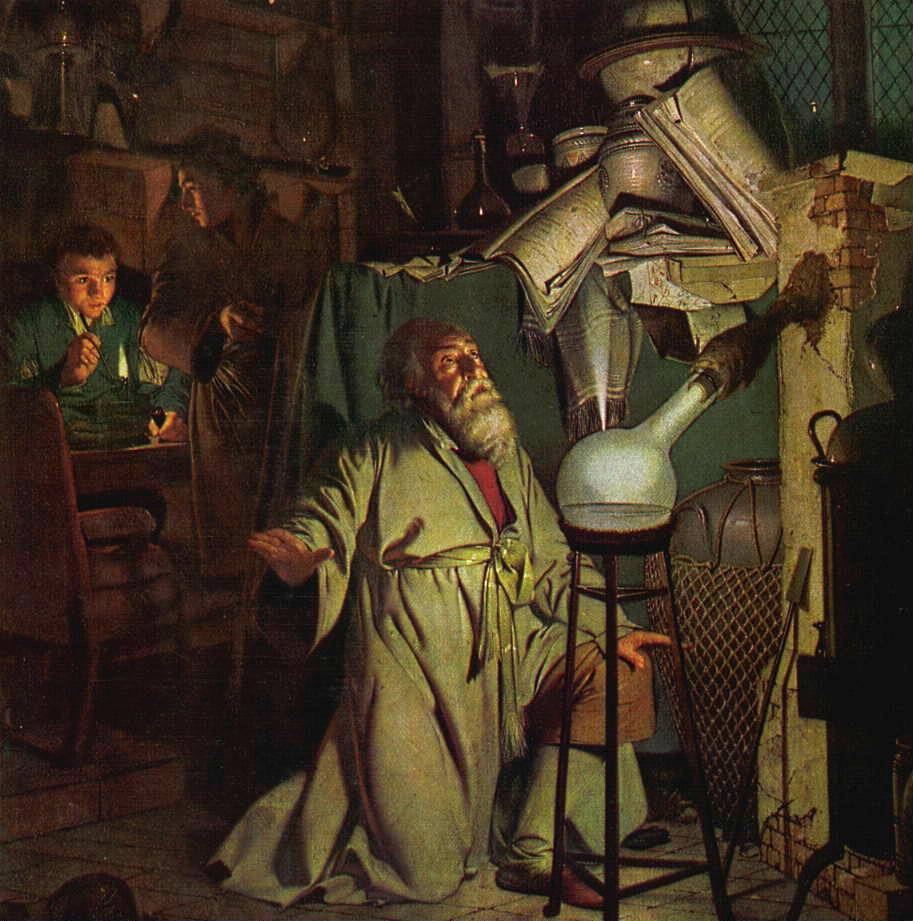A Note on Alchemy
A Note on Alchemy
 Long ago my friend Ioan Culianu, the most deepy learned man I’ve ever known well, and one of the most open and generous of that tribe, was tapped to upgrade a huge encyclopedia of magic and religion that his older colleague and fellow Romanian refugee had compiled. Culianu had recently read the first volumes of my Ægypt series, and of course knew all my sources (and doubtless my errors), but was also highly encouraging about the books. WHen he told me about the encyclopedia gig, he invited me to submit an article — perhaps, he said, on alchemy. It wasn’t long after that that he was assassinated by Rumanian agents who have never been fully identified or caught. The paragraphs below are all that I ever wrote of a precis or pitch for that article, which I was very certain I was unprepared to write.
Long ago my friend Ioan Culianu, the most deepy learned man I’ve ever known well, and one of the most open and generous of that tribe, was tapped to upgrade a huge encyclopedia of magic and religion that his older colleague and fellow Romanian refugee had compiled. Culianu had recently read the first volumes of my Ægypt series, and of course knew all my sources (and doubtless my errors), but was also highly encouraging about the books. WHen he told me about the encyclopedia gig, he invited me to submit an article — perhaps, he said, on alchemy. It wasn’t long after that that he was assassinated by Rumanian agents who have never been fully identified or caught. The paragraphs below are all that I ever wrote of a precis or pitch for that article, which I was very certain I was unprepared to write.
From its formulation in Hellenistic times through the enormous expansion it underwent in the late Renaissance, alchemy was always a science: that is, a method of investigating the properties of nature, based on a system of assumptions about what nature is.
The alchemical method was, cheifly, transformation: the attempt to transform one kind of thing into another. Successful transformation would prove to the alchemist that he did, in fact, understand the nature of the things he transformed–for instance, lead transformed into gold.
Among the assumptions of alchemy–as of all ancient science–was the assumption that human moral and spiritual distinctions extended into the world of physical processes: that the stars, the metals, the acids the alchemist worked with had moral qualities, goodness and badness, kindness and unkindness; and that matter, like the human soul, had aspirations to rise from “base” to “noble”. Another working hypothesis was that human perception of a similarity in the natural world–for instance the similarity of a yellow animal with teeth (a lion) to a yellow flower with toothed leaves (a dent-de-lion) was not accidental or trivial but a discovery of how two things were really connected.
Both the method and the assumptions of alchemy were discarded by by modern chemistry; indeed the struggle against the attribution of moral qualities to natural processes was an important part of the birth of modern scientific method. The adventure of discovering real functional relations among chemical elements eclipsed the dreamlike and at bottom unproductive quest of the alchemists: they were wrong about nature, and the new science was right.
At the beginning of our century, alchemy was rediscovered, and the immense body of lore it had generated awoke new interest–for exactly the reasons it had been rejected by scientists: its quality as an allegory of human desires and moral conflicts. For the “magicians” of the fin-de-siecle, the Brotherhood of the Golden Dawn, alchemy was a secret science of spiritual, and not material, transformation; for Carl Jung and his patients and followers, it was a cognate of psychological integration, the reconciliation not of chemical but of psychic opposites.
But alchemy is, after all, not an allegory but a science, and alchemical work has always been, to its greatest exponents, an investigation, not of the soul–or not only of the soul–but of the world. To treat it as a spiritual or psychological science having nothing to do with matter is to intensify the division between “man” and “nature” which the alchemists dreamed of healing.
There is, however, another way of thinking about alchemy, which preserves its relation to physical science, without accepting its hypotheses about matter and transformation. We can see alchemy in another way,
When emptied of its content as science (i.e. the statements it makes about the nature of physical reality, which are false) alchemy becomes something like a mode of art–a representation, which only symbolically or virtually contains the qualities of what it represents. The great American phiosopher Suzanne Langer, now too little regarded, contended in her book Feeling and Form: A Theory of Art that what art objects consist of is a virtuality: a painting, for instance, is a virtual space, though in actuality it is flat; sculpture is virtual volume, seeming to have insides that it doesn’t. Music (Langer was a cellist) is virtual time. She didn’t take notice of film as art, but the virtuality there is obvious: movies are virtual dreams.
Alchemy in the terms of this discourse represents science while not being science, as a painting represents space while remaining flat, as a novel represents history or biography while being fictional (virtual history, Langer would claim). Alchemy is virtual science.


